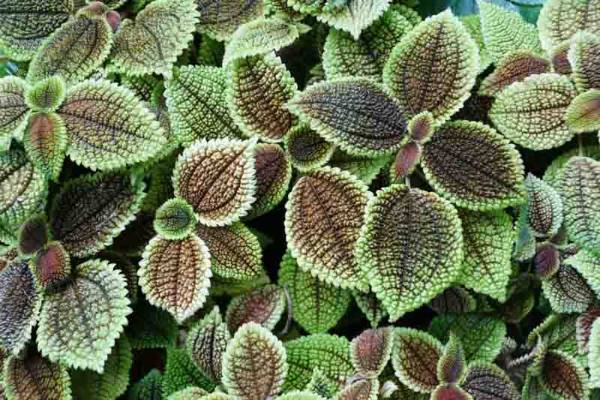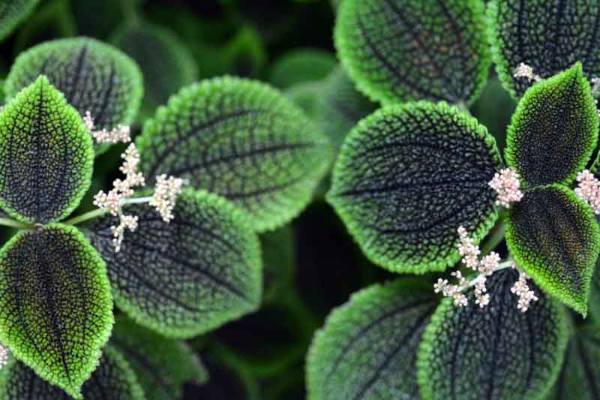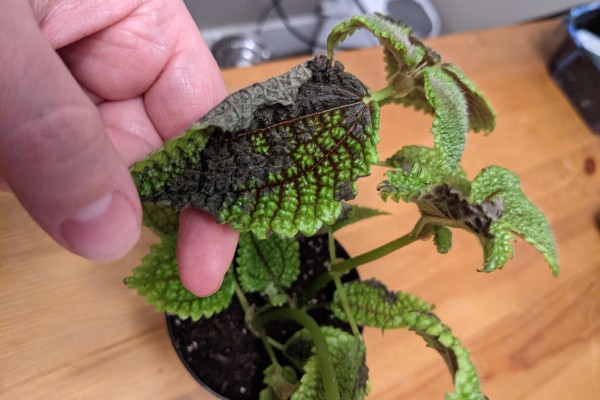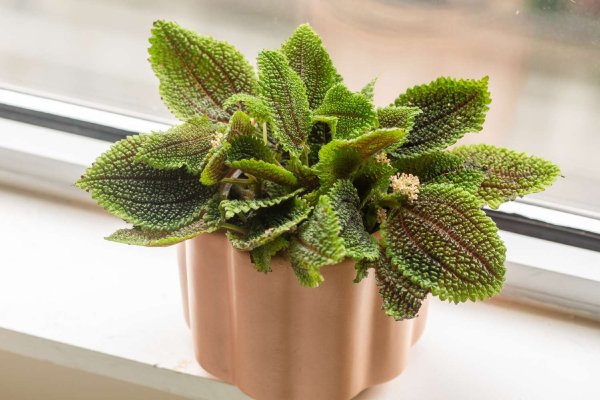Pilea Involucrata is a fast-growing, perennial indoor foliage houseplant that is popular with its unusual texture on ornamental leaves. It is also referred to as the ‘Friendship Plant’. The leaves are oval-shaped, with a soft, velvety feel and a delightfully wrinkled texture. The upper surface of the leaves has bright green edges while the undersides have a beautiful bright red color. During the summer, the plant also produces tiny clusters of pinkish-white flowers, called cymes. However, it rarely blooms if it is grown indoors. Similarly, this plant is commonly mistaken for Pilea mollis as it is also known as a friendship plant.
Here, we will share more details on Pilea Involucrata including its growing methods and caring tips.
Plant Descriptions
Plant Type: Perennial
Scientific name: Pilea involucrata
Genus: Pilea
Common name: Friendship plant
Family: Urticaceae
Season: Spring
Native Area: South America, Central America
Where to grow Pilea Involucrata?
Pilea Involucrata is native to the tropical and subtropical regions of South and Central America. It prefers a growing location with partial sun or partial shade. Meanwhile, it is best to grow on the forest floors where it receives dappled, filtered light and is protected from intense, direct sunlight. The plant can grow up to 30 cm tall. Thus, it is suitable for growing on a windowsill or in a terrarium. Similarly, the soil should be kept evenly moist but not soggy. Additionally, the friendship plant likes warm temperatures throughout the year that should not fall below 10°C (50°F).

How to care for Pilea Involucrata
Light
Pilea involucrata does well under bright, indirect light. The light helps the plant to grow and remain healthy. Nonetheless, direct sunlight can burn the leaves and weaken the plant. In case you are growing it inside, place the pot close to the south- or west-facing windows so that the plant has gentle, filtered light.
Soil
The Pilea plant thrives in well-draining soil enriched with organic matter. For optimal blend, combine compost, perlite, and coco coir. This helps excess water drain out while keeping enough moisture for the plant. It also stops the soil from getting too wet and causing root problems.
Water
Your friendship plant needs consistently moist soil but avoid letting it become waterlogged. Water the plant when the top inch of soil feels dry. Since Pilea plants don’t like drying out, it is important to water them regularly. Similarly, overwatering can lead to soggy soil and cause root rot. During the winter, when the plant’s growth naturally slows down, reduce the frequency of watering.
Temperature and Humidity
Friendship plants thrive in warm temperatures ideally between 65°F to 75°F. They are sensitive to cold so it is important not to exposure below temperatures 50°F (10°C). Additionally, these plants flourish in environments with moderate to high humidity. You can mist it regularly with water to increase humidity and create a suitable atmosphere for your plant.
Fertilization
Feed your Friendship plant once a month throughout the growing season (spring or summer). Use a balanced liquid fertilizer that is diluted to half-strength. However, it doesn’t need to be fertilized during the winter season.

Pruning
Friendship plant requires regular pruning to maintain their busy and compact appearance while also encouraging new growth. Carefully remove leggy stems and dead leaves which helps to improve air circulation around the plant.
Pests and Diseases
Pilea is generally resistant to serious pest problems. However, it can occasionally be affected by pests such as mealybugs, spider mites, and aphids. Additionally, it might encounter issues like lead spots and steam rot. To prevent these problems, it is essential to regularly monitor the plant and provide proper care.
What are common Pilea Involucrata problems?
Some common problems are likely to arise with Pilea Involucrata if the plant is not properly cared for. When you overwater your plant or use soil that doesn’t drain properly, the leaves will start to turn yellow. Yellowing of the leaves will eventually root rot. Therefore, use a well-draining mix and water only when the top inch of the mix has become dry. Another problem that might arise is browning on the edges of leaves. Browing at the edges of the leaves is mostly caused by low humidity. Pilea Involucrata grows well in medium to high levels of humidity. The edges of its leaves turn brown if the air around it is too dry. Moreover, it will shed some leaves which could be due to sudden changes in light, temperature, or humidity. Therefore, maintaining a consistent environment is essential to prevent this issue. While less common, Pilea Involucrata may still be infested with pests. This may include spider mites or even aphids. These insects can harm the leaves and stems. Checking the plant regularly will ensure that any pest issues can be identified at an early stage, preventing serious damage.
How to propagate Pilea Involucrata
Pilea Involucrata can be easily propagated through stem cuttings. Here is a step-by-step guide to help you successfully grow new Pilea plants:
Step 1: Select a healthy stem from your mature Friendship plant with at least 2-3 leaves or nodes. Nodes help with the root development of the new plant.
Step 2: Take a clean, sharp pair of scissors or pruning shears. Then, cut just below a node about 3-4 inches long.
Step 3: Remove the lower leaves from the cuttings and dip them into the rotting hormone which helps to encourage root development.
Step 4: Take a pot and fill it with a good draining potting mixed with organic matter. Water the soil to be consistently moist.
Step 5: Next, plant the cuttings in the pot and wrap it in the plastic bag to increase the humidity. Also, make sure to air out the bag daily.
Step 6: Further, place the pot in bright, indirect light for its healthy growth. Water the cuttings when they begin to dry.
Step 7: After a few days, the cuttings start to develop a root system. Once the cutting has rotted transfer it to a larger pot and continue further care process.

Conclusion
In conclusion, Pilea Involucrata, or Friendship Plant, is a delightful perennial houseplant known for its unique and ornamental foliage. It has textured, egg-shaped leaves featuring bright green edges and a striking red underside. While it thrives in bright, indirect light and enjoys a warm, humid environment. Similarly, proper care is essential to prevent common issues like yellowing leaves or pests. By following the recommended care tips, including maintaining well-draining soil, regular watering, and periodic pruning, you can ensure a healthy and thriving Friendship Plant. Additionally, it propagates very easily using stem cuttings, so you can easily expand your plant collection or share this lovely plant with friends.
Also read, How to Grow and Care for Burgundy Rubber Plant, a Popular Houseplant!
Frequently Asked Questions
1. What are Pilea Involucrata?
Pilea involucrata, commonly known as the Friendship Plant, is a perennial houseplant popular for its distinctive, textured leaves with bright green edges and a red underside. It is native to tropical and subtropical regions of South and Central America.
2. How do I care for a Pilea involucrata?
Place your Pilea involucrata in bright, indirect light and avoid direct sunlight to prevent leaf burn. Use a well-draining mix with compost, perlite, and coco coir. Keep the soil moist but not waterlogged. Maintain temperatures between 65°F to 75°F (18°C to 24°C) and avoid drops below 50°F (10°C). Ensure moderate to high humidity, and mist regularly to keep the air moist.
3. How often should I fertilize Pilea involucrata?
Fertilize once a month during the growing season (spring and summer) with a balanced, diluted liquid fertilizer. Avoid fertilizing in winter when the plant’s growth slows down.
4. How do I propagate Pilea involucrata?
To propagate, take a healthy stem cutting with 2-3 leaves or nodes. Remove lower leaves, dip the cut end in rooting hormone, and plant in a well-draining potting mix. Cover the pot with a plastic bag to increase humidity, and place it in bright, indirect light. Water when the soil starts to dry. Once roots develop, transfer to a larger pot.
5. How do I prune the Friendship plant?
Prune to maintain a compact shape and promote new growth. Remove leggy stems and dead leaves to improve air circulation.
